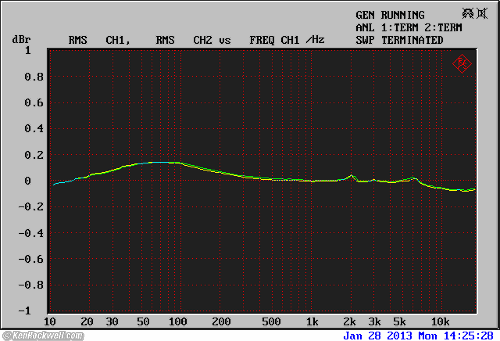Trenn
New Head-Fier
- Joined
- Jan 28, 2013
- Posts
- 11
- Likes
- 12
Quote:
Those are the level at each frquency. You need to square and then sum/mean and then square root each level to arrive at the final level. If you do that, the ipod playing mp3 looks to have about 13 bits (best case) signal to noise ratio in the 20 to 20 KHz bandwidth. Not exactly hi fi
Not sure how noise at -120 dB instead of -145 dB is an issue for audio intended for human listening.
Unless you specialize in listening to amplified silence.
Those are the level at each frquency. You need to square and then sum/mean and then square root each level to arrive at the final level. If you do that, the ipod playing mp3 looks to have about 13 bits (best case) signal to noise ratio in the 20 to 20 KHz bandwidth. Not exactly hi fi







